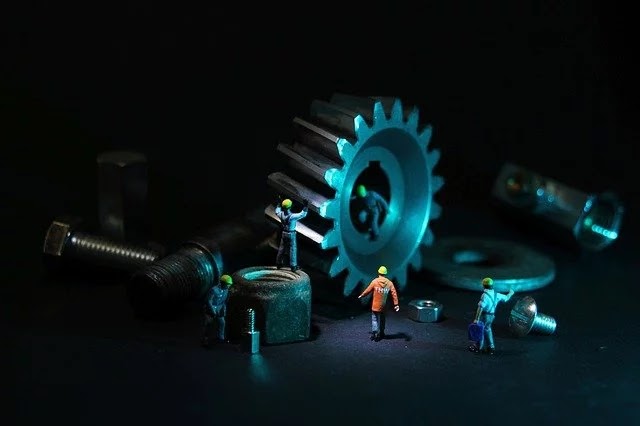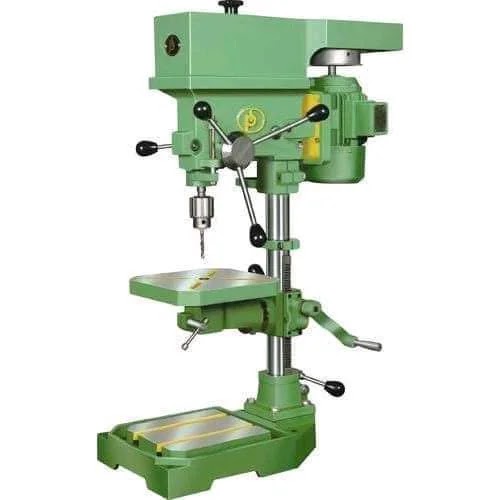The most common type of gear is the spur gear Types of Gears: The Different Types and How They Work. Spur gears are used in applications where speed is not as critical and where there is more space available. They are also used to transmit power in systems with lower torque requirements. There are three variations of spur gears: straight teeth, synchronous teeth, and helical teeth.
Types of Gears
Spur: Spur gears are the most common type of gear used in a wide range of applications. A spur gear consists of a set of teeth with the surface touching each other so that they can rotate around their center point. The teeth of a spur gear are straight.
Synchronous: Synchronous gears are used in various applications where speed is not as critical as torque requirements. In these applications, the speed of the motor is the driving force. A synchronous gear works by rolling synchronously. Thus, the distance between the tooth holes of the gear is the same as that of the flywheel. Helical: Helical gears are best suited for applications where low torque is needed.
Spur Gear
Types of Spur Gears Two types of spur gears are commonly used, straight gear one shaft bend-axle gear These two types of spur gears have almost the same size, but the other is smoother and uses less material. The straight gear's teeth are all straight, but when the shaft of the shaft is bent or the shaft and gear change position, the teeth point in various directions.
Straight Spur Gear Straight spur gears are similar in some ways to helical gears and they work the same way. The gears are all the same size, but the tooth arrangement varies slightly. The single spur gear has a straight shaft, while the multiple spur gear has a curved shaft that fits the spur gear.
Also Read : Bikes Winter Problem. Take A Time For Starting Use This Tricks
Related Articles : The Future Of Electric Bikes: Advantage And Disadvantages
Helical Gear
What is a helical gear? A helical gear is a type of spur gear. They’re a spiral arrangement of helical gears that spiral around one another. To understand how a helical gear works, we need to know how a spur gear works. Spur Gears In a spur gear, the teeth are aligned in such a way that they will act as rims for the ends of the axle, which is actually the ring gear of the spur gear.
The axle inside a spur gear can be any type, but the simplest axle is a square one. It is typically made of steel or aluminum, and can be shaped into a triangular shape, a pentagon, or a pentagon-gonal. If the axle is a pentagon, the entire gear may be referred to as a pentagon gear. In a spur gear, each tooth is connected to one end of the axle.
Bevel Gear
A bevel gear is a type of spur gear that is used to transmit power in rotational motion. In a bevel gear, the teeth are arranged in an “X” shape. The teeth are perpendicular to the axis of rotation. In a bevel gear, there are three primary regions of teeth: Straight teeth are between one and three on a bevel gear.
A straight tooth is straight in direction. Synchronous teeth are between three and four on a bevel gear. A synchronous tooth is equal in height and diameter to a straight tooth, but it rotates at a different rate. Helical teeth are between four and six on a bevel gear. A helical tooth is similar to a helical gear, but it rotates at a different rate. C-C Gear C-C gear is a type of spur gear used in industrial settings. It has the ability to take torque from a shaft.
Worm Gear
Worm gear is the simplest type of gear. It consists of straight teeth that are tightly pressed together at the bottom, which makes the speed greater when the spoke spins. Synchronous Tooth Synchronous teeth differ from spur gears in that they have a series of evenly spaced teeth instead of having straight teeth. A common usage of these types of gears is in bikes, where they allow the spokes to rotate around the hub.
The space that would usually be used for the hub of a car or motorcycle can instead be utilized by a spokeset that has symmetrical teeth. Helical Tooth The helical teeth, sometimes referred to as “hybrid” gears, are a combination of a straight and a helical form of teeth.
The Six Basic Gear Teeth and Their Variations
Tooth Shape: The different types of spur gears use different tooth shapes and the most common ones are known as 'broadway', 'clover leaf', 'wire turn', and 'crosshead'. Although these names are not particularly descriptive, they are very important in determining the function of the gear and the performance of the transmission.
Broadway and Clover leaf have similar performance, but crosshead and wire turn are more complex and may be less suitable for low speed applications. Speed Capacity: Spur gears are usually categorized based on their speed capability - as high as 200,000 RPM and as low as 1,000 RPM. Spur gears can usually be cycled from high to low speed, even if the shaft is turning at high RPM.
Types of Gears based on their Speed Capacities
Thrust: Sometimes the requirements for speed are not as stringent as in other applications. A spur gear is perfect for applications where maximum speed is not essential. However, spur gears are not the best choice for low-speed torque. Tailwind: The different types of spur gears have different operational speeds.
Spur gears are the least expensive type of gears for applications that require a moderate speed, but not a fast rate of acceleration. Bent: In a bending application, a spur gear performs more like a chain. The length of the teeth does not change, but the cross-section of the teeth must be less than the radius of a circle so the teeth will be spaced apart when placed in the proper orientation.
Different Gear Applications and Drives
Different Types of Gears How Spur Gears Work: A spur gear is a type of gear in which each gear tooth is self-lubricating. When rotating, the gears move in a very specific pattern so that there is friction with the frictionless material they are rotating against. They are also known as gearing. The primary advantage to spur gears is that there is no reduction gear in the transmission.
However, there are some disadvantages such as the higher torque requirements and lesser efficiency than geared transmissions. The Spur Gear transmission is also difficult to adjust, unlike gearing. The terms spur and common gear can be used interchangeably. But the two terms are different. A spur gear is not a common gear. The difference lies in the difference in the direction of rotation.
Conclusion
Now you know all about the different types of gears and how they operate, you can use them to design efficient gear motors. And because a gear motor is a very simple motor, it can be used in almost any application. If You Have Any Queries So Write Your Queries In Life Style Knowledge Hub Comments Box












.webp)





0 Comments